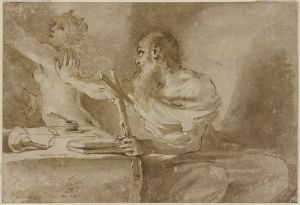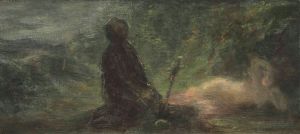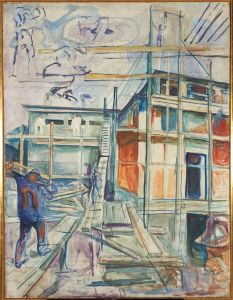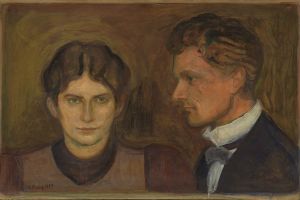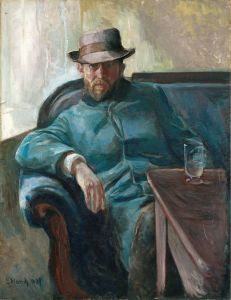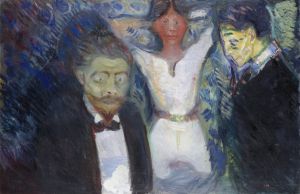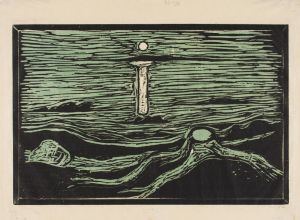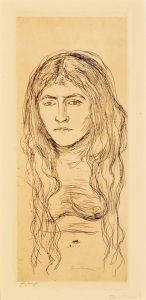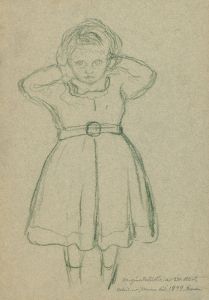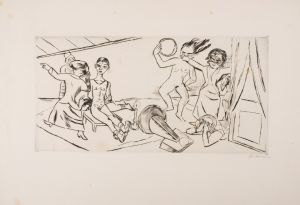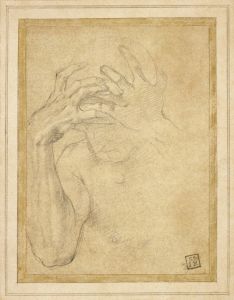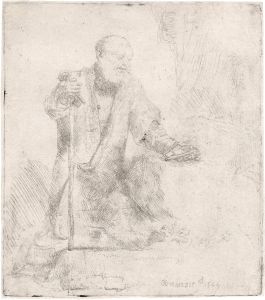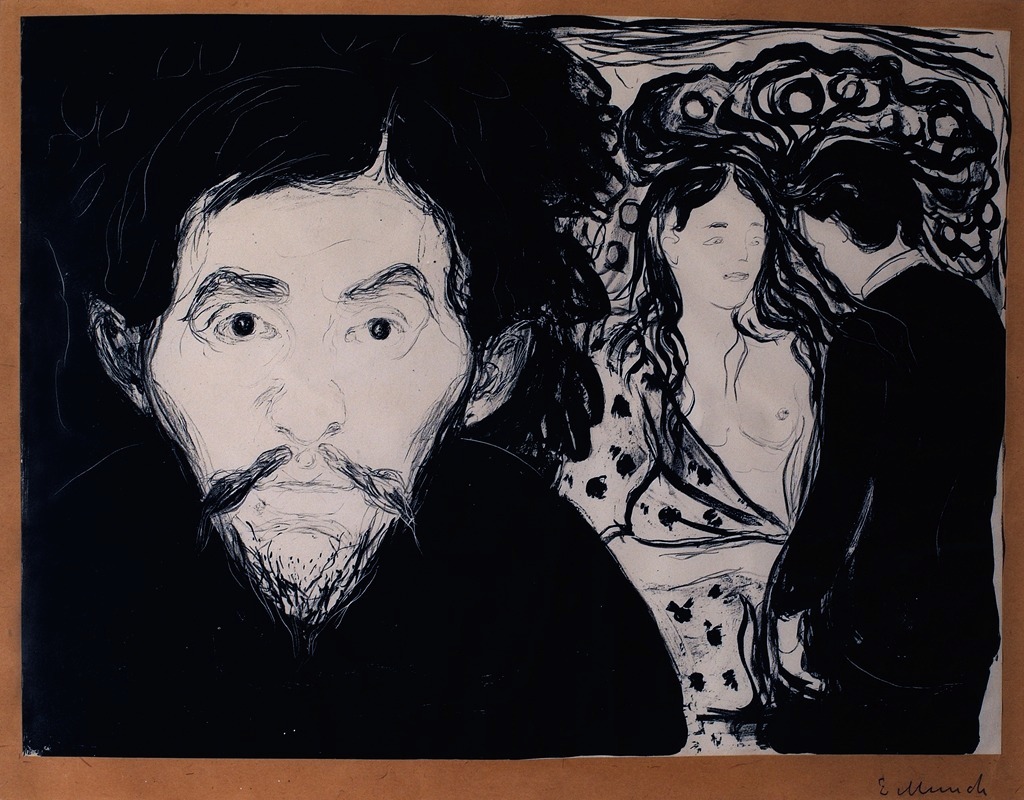
Jealousy
A hand-painted replica of Edvard Munch’s masterpiece Jealousy, meticulously crafted by professional artists to capture the true essence of the original. Each piece is created with museum-quality canvas and rare mineral pigments, carefully painted by experienced artists with delicate brushstrokes and rich, layered colors to perfectly recreate the texture of the original artwork. Unlike machine-printed reproductions, this hand-painted version brings the painting to life, infused with the artist’s emotions and skill in every stroke. Whether for personal collection or home decoration, it instantly elevates the artistic atmosphere of any space.
Edvard Munch's painting Jealousy is one of the notable works by the Norwegian artist, who is widely recognized for his contributions to modern art and his exploration of intense emotional and psychological themes. Munch created several versions of Jealousy between 1895 and 1907, reflecting his recurring interest in the subject of human relationships, particularly love, desire, and the darker emotions that accompany them.
The painting depicts a dramatic scene involving three figures, with the central focus on a man whose face is marked by an expression of jealousy and anguish. In the background, a couple is shown in an intimate moment, suggesting a romantic or sexual relationship. The composition is characterized by Munch's signature use of bold colors, expressive brushstrokes, and a somewhat distorted perspective, all of which heighten the emotional intensity of the work. The figures are rendered in a way that emphasizes their psychological states rather than their physical realism, a hallmark of Munch's style.
Jealousy is often interpreted as part of Munch's broader exploration of the complexities of human emotion and interpersonal dynamics. It is closely tied to his series of works known as the "Frieze of Life," which includes other iconic pieces such as The Scream, Madonna, and The Dance of Life. These works collectively delve into themes of love, anxiety, death, and existential despair.
Munch's personal life and experiences often influenced his art, and Jealousy is no exception. While the exact inspiration for this painting is not definitively documented, it is known that Munch had a tumultuous romantic life, and his relationships frequently informed his artistic output. However, any specific connections between Jealousy and Munch's personal relationships remain speculative and are not confirmed by historical evidence.
The painting has been exhibited in various museums and galleries over the years, contributing to Munch's reputation as a pioneer of modern art. His innovative approach to capturing raw emotion and psychological depth has had a lasting impact on the art world, influencing movements such as Expressionism.
Today, Jealousy is regarded as a significant example of Munch's ability to convey the complexities of human emotion through his unique artistic language. It remains a subject of study and admiration for its powerful depiction of one of the most intense and universal human feelings.





